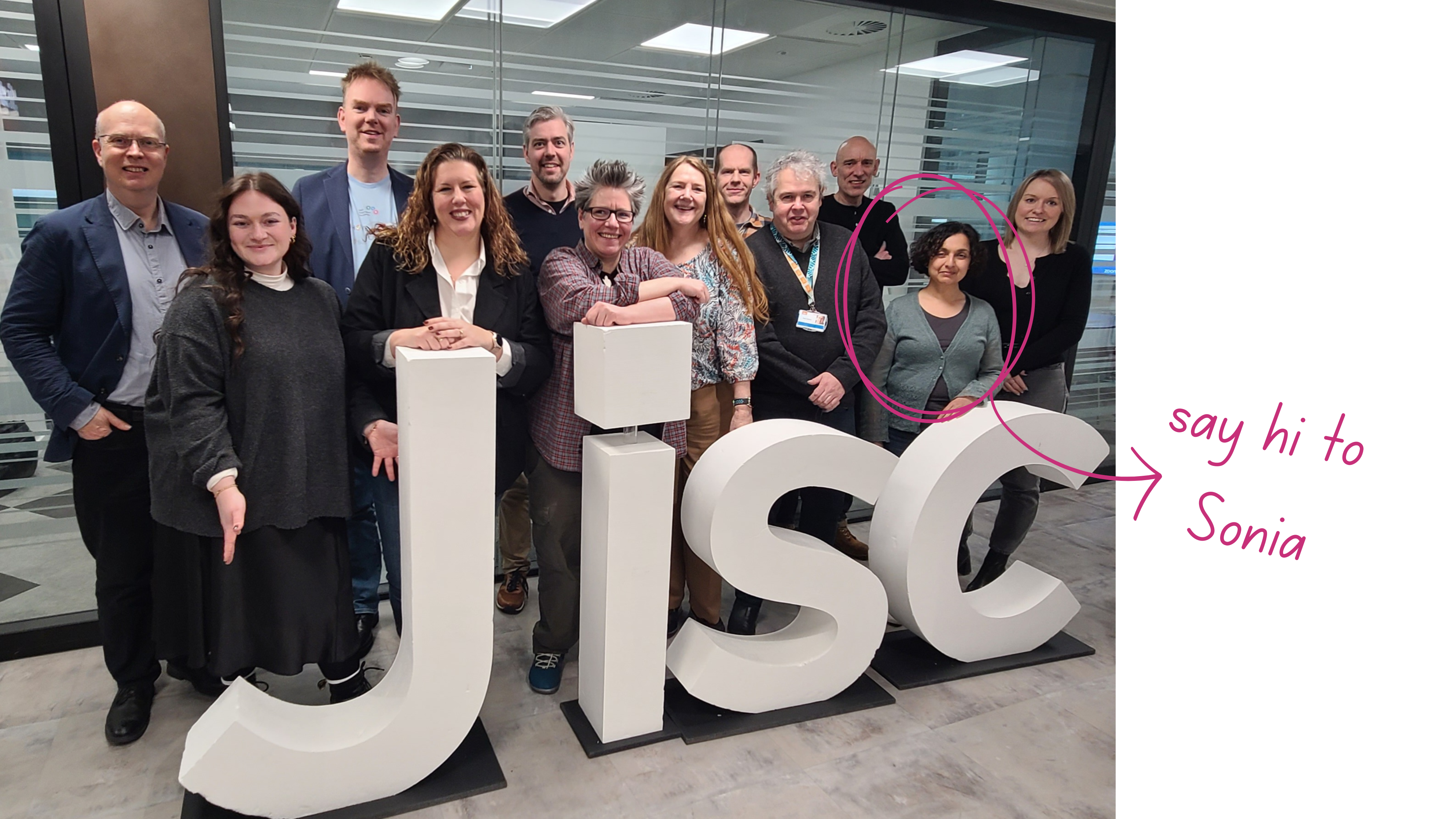Sonia Ranade works at the National Archives UK, and was recently elected to join the OPF’s board of directors following Anna de Souza’s retirement from the role.
I got to meet Sonia for the first time, alongside the rest of the OPF Team when we had a team and board meeting in London last month. When working in a primarily wfh role, it’s always really exciting meeting people for the firs time in person. Sonia has a brilliant mind, and had a myriad of great ideas and contributions for us at the OPF. We really look forward to having them on the board of directors going forward.

This photo was taken in February 2024 at the JISC offices in London, UK. They kindly hosted the OPF Team meeting.
Left to Right: Yannick Grandcolas, Georgia Moppett, Remco van Veenendaal, Amanda Slotboom, Jeffrey van der Hoeven, Micky Lindlar, Julie Allen, Peter May, Paul Stokes, Carl Wilson, Sonia Ranade, and Helena Watson.
Absent: Max Kaiser, Darren Dignam, and Lana Emerson.
We caught up with Sonia to find out more about their digital preservation work. They have kindly answered our questions so that you can get to know them more, also:
Tell us a bit about yourself and your role …
I’m the Head of Digital Archiving at The National Archives, based at Kew in West London. I’m responsible for building and running a archive service for the digital records that are transferred to us for permanent preservation. The service goes beyond digital preservation to cover transfer and access too. At the moment, the Transfer team are working to make transferring digital records as easy as possible. Our aim is to archive the best-quality, most richly described and richly contextualised record that we can. The Access team is doing some fantastic work to make records available in different formats to meet the needs of different users. For example, our Find Case Law service provides access to court judgments for our readers as HTML or PDF and additionally makes them available as structured data (XML) for computational re-use. The Digital Preservation team is responsible for looking after the records over the long term. We develop and manage DROID and PRONOM as a file format identification resource that is used and contributed to by the wider digital preservation community. We also created DiAGRAM, a Bayesian statistical model for assessing digital preservation risk.
How did you get here? What was your path into digital preservation?
It’s been a long path but possibly it was inevitable that I’d find myself working in a national archive! As a teenager, I had a part-time job as a library assistant in my local public library. I thought about doing a degree in library and information studies but was offered the (excellent) advice that it was too early to specialise and that I should study a subject I loved and then do a vocational master’s degree if I still wanted to pursue a career in this field. So I went off to university to read Chemistry and then did an MSc in Information Science. The opportunity came up to do a PhD that combined the two (applying data analytics & predictive modelling to problems in chemistry). After that I worked as an information scientist for a pharmaceutical company, where I got more interested in data management and encountered archives for the first time. I joined The National Archives in 1998 as a database administrator. I’ve had various roles at TNA over the years, which eventually brought me in to the Digital Preservation team. As we’ve started to take in more digital records, my role has expanded from an initial focus on digital preservation to digital archiving, which also includes services for digital transfer and access.
What are you working on at the moment?
We’ve been working to build our services as a digital archive, looking to make the whole process easier for our records creators. This includes work on developing our systems but it also needs a lot of thinking about how policies and process that were developed for the paper world can map across to digital records (often they don’t). It’s been a privilege to work in archives at a time where there is so much change. I’ve enjoyed exploring new ways of thinking about the archive and I particularly love the opportunities for better access and re-use of archives that come with digital records.
What do you see as the main benefit of OPF membership?
I really value the way that OPF brings together a community of digital preservation practitioners. We share many of the same challenges so it’s a huge benefit to have this forum for discussion and sharing ideas. At TNA, we use OPF tools in our digitisation workflows and, as a provider of preservation tools ourselves, we also benefit from OPF’s leadership in this area. I personally really enjoy the OPF webinars – they are a great way to stay up to date with a broad range of topics in digital preservation, more so for me as I don’t get to do very much hands-on digital preservation work myself any more.
Who are you / what do you like to do in your free time?
Like most readers, I don’t get very much free time! I’m lucky enough to have lots of parks and open space near me and I like to get out and walk or cycle as much as I can. I read (mostly science fiction), I try not to have too much screen time outside of work, and a few years ago I started learning to throw pots on a wheel. I’m improving very slowly!



March 13, 2024 @ 1:56 pm CET
Welcome Sonia! We are so happy to have you on the Board and look forward to working together at the OPF!